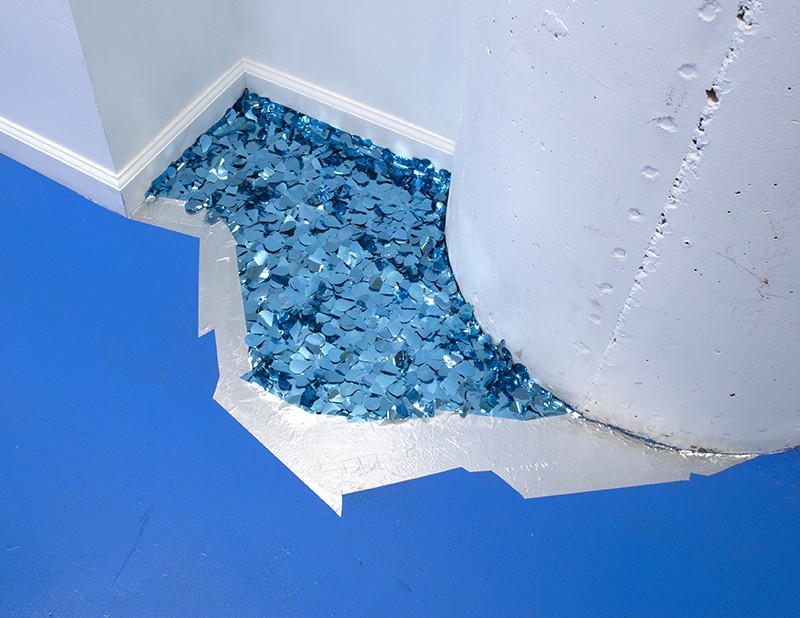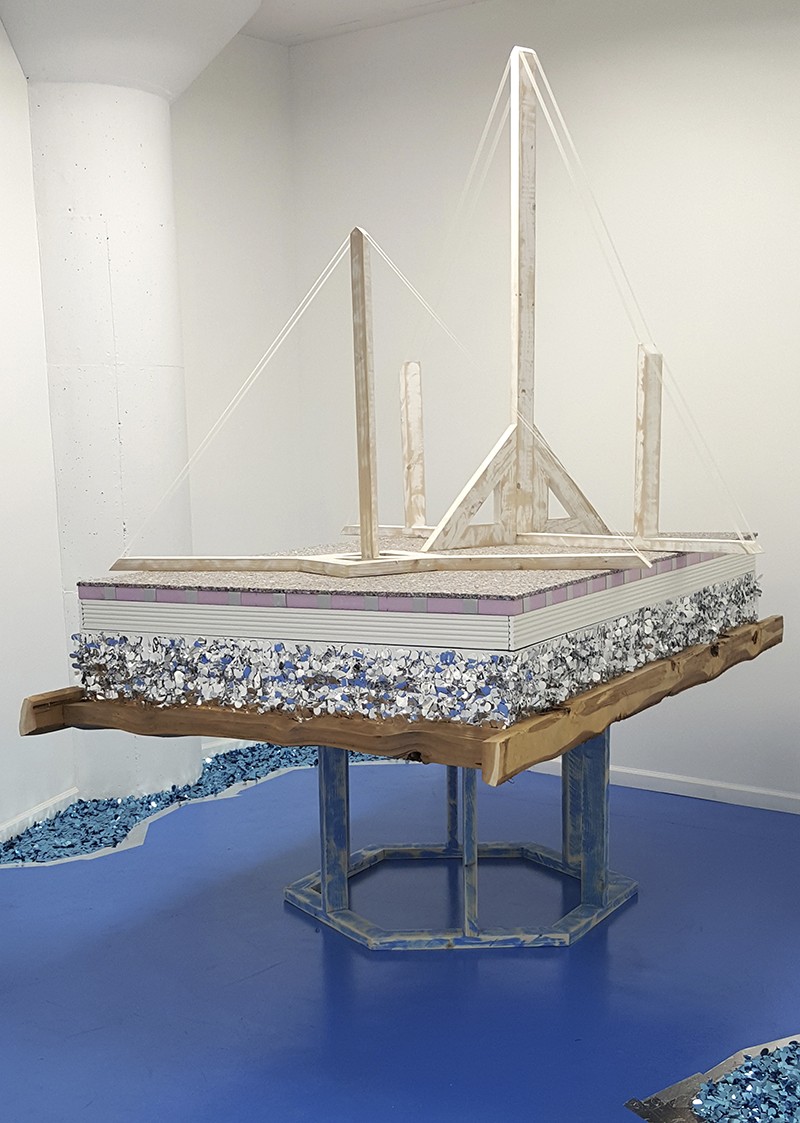Painter David Reed, in his 2006 catalog essay "Streets and Studios," describes Lower Manhattan in the early 1970s as "a city in a science-fiction movie — post disaster, after an atomic bomb or alien invasion." This urban wasteland attracted artists who took up residence in the neighborhood's former factories and sweatshops, some of which still had machinery intact. It was a particular moment in time for art, made possible by the opportunity provided by an urban environment abandoned. In these vast interiors, paint was poured free-form and alternative art spaces flourished. It is hard to imagine New York as shuttered and lonely, home only to pioneering creatives. Even more difficult is feeling that there was a rarity to that particular time, that it vanished and can never be re-created.
Museum Blue, a downtown St. Louis project space housed in the same former shoe factory that holds the City Museum, has an uncanny similarity to those fabled, abandoned lofts. Manhattan's past becomes vividly conflated with the current built environment of St. Louis: Here, we have the same industrial setting, the vacant space. In the spirit of those early '70s makers, artist/educators Gina Grafos, Lauren Cardenas, Michael Behle and Carlie Trosclair began Museum Blue a year ago. The museum occupies part of their shared studio space on the fourth floor, a wide entryway demarcated by a coat of high-gloss, cobalt-blue floor paint leading to the artists' work space in the rear.
Water. Water. is the first exhibition of Museum Blue's second season, a collaborative project by artists Allison Lacher and Jeff Robinson, who co-direct the Demo art space in Springfield, Illinois. The project marks a change in the curatorial approach Museum Blue's founders usually take; here, they simply accepted the duo's proposal and let them do their thing. This hands-off approach allows for decisions about the show — from layout to edits — to fall almost exclusively to the artists, bypassing the curator as tastemaker and critic. In the case of Lacher and Robinson's sparkling, material-driven sculptures on display, it's clear that everyone has done well by this model.
Hearing the show's title prompts viewers to finish the "water, water" line with the customary "everywhere, and not a drop to drink." The implied phrase suggests the isolation of the castaway, adrift, without aid in sight. Ocean views and seagoing vessels are constructed from plywood, foam and highly reflective vinyl. Taking full advantage of Museum Blue's cerulean floor, Lacher and Robinson extend this color field by painting the wall, encouraging the viewer to submerge, go under, get lost.
While there are moments in the work where that slippage occurs, it is the craft and surface of the objects that are truly the most pleasurable. Using materials readily available at most big-box home improvement stores, the pair somehow manages to avoid the dreaded "Home Depot Esthetic" characterizing similar contemporary sculpture. Carefully sanded and polished stays made from simple two-by-fours articulate the mast and frame of a life raft that dominates the modest exhibition space.
At a certain point it becomes clear that what Lacher and Robinson would really like to talk about: not just the physical state of being adrift, but the existential implications of a self-imposed daydream. The word "rarity" again comes to mind, and the worlds we all build in the pursuit of vision. Water, Water brings one such vision to life, all dazzle and glamor. For a moment, we almost believe it's real.



